CPT Q. 016: How can a trench possibly intersect a ridge?
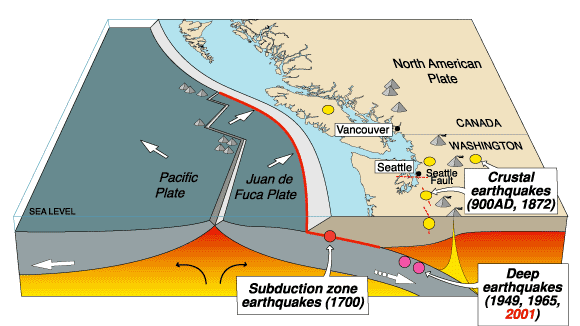
Q. 16. Why is it that at three locations on earth, a trench (where rock presumably is descending) purportedly intersects a ridge (where material is presumably rising)? How can material be going up and down at the same time?
Response: The first of these sites is the north end of Explorer Ridge, located off the coast of British Columbia just south of Queen Charlotte Island and northwest of Vancouver Island, where it forms a triple junction with the Queen Charlotte Fault and the north end of the Cascadia Trench. The location is indicated in the figure below by the black arrow. As far as can be determined from observation, both the Explorer Ridge and the Cascadia Trench terminate at this triple junction. There is nothing which seems to indicate that the ridge continues toward the continent beyond the trench. New plate produced by spreading at the end of the ridge appears to be accommodated by oblique subduction into the trench. So this site does not appear to correspond to a case of a ridge itself subducting into a trench.
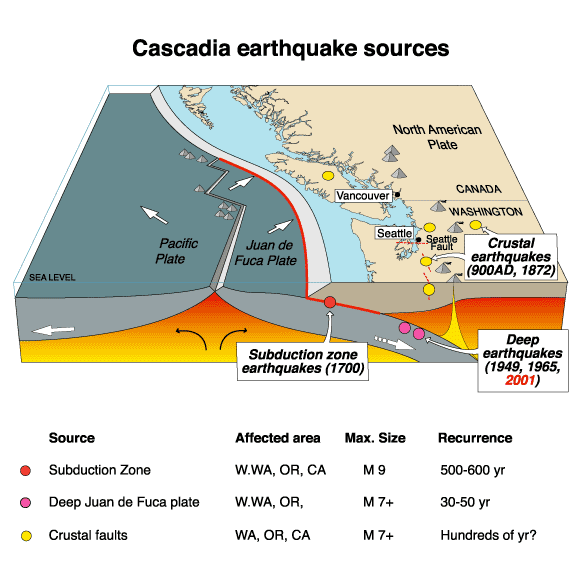
The second site, at 20.5 °N, 107 °W, is near the northern end of the East Pacific Rise along the western coast of Mexico just below the mouth of the Gulf of California. The region is shown in the map below.1

One notes that the location 20.5 °N, 107 °W is in the middle of the small Rivera Plate and not on a ridge, although it is near the Acapulco Trench. So it is not clear what feature was intended here.
The third site is along the western coast of southern Chile, where the Chile Rise, an oceanic ridge between the Nazca and Antarctic Plates, is indeed being subducted into the Peru-Chile Trench. A PowerPoint geology class presentation of this remarkable feature is available here (or here). Below are some of these slides.
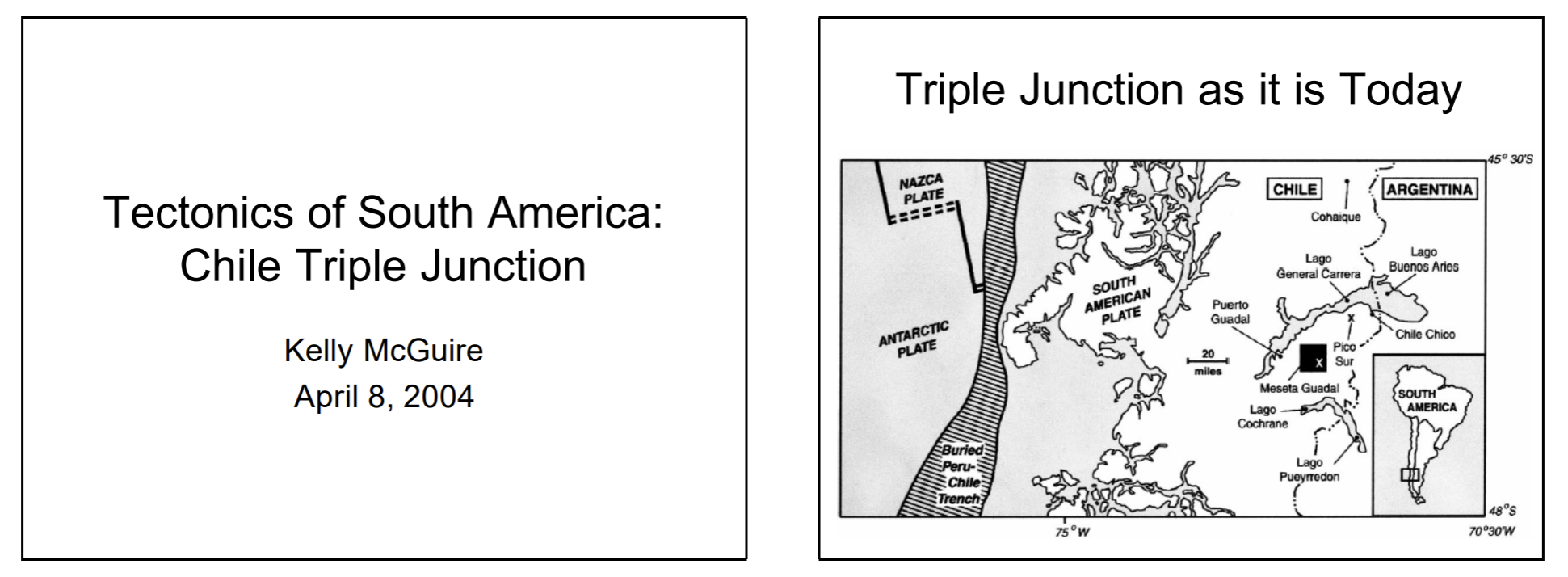
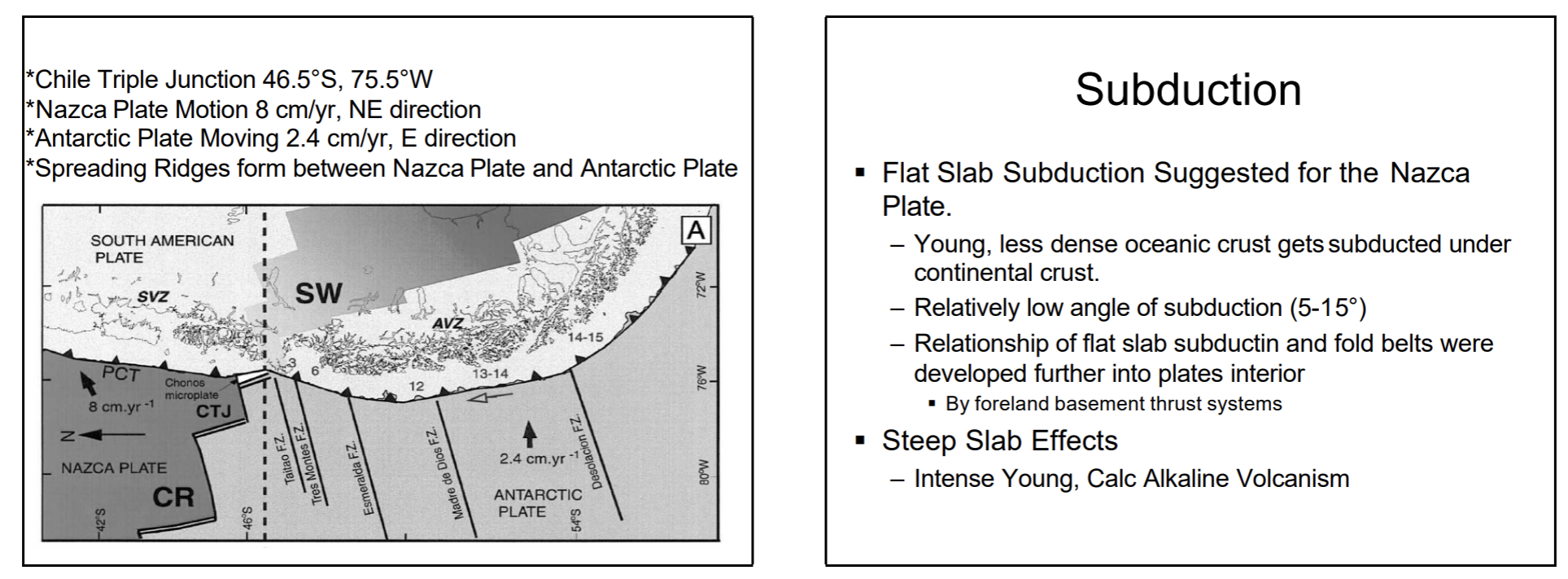

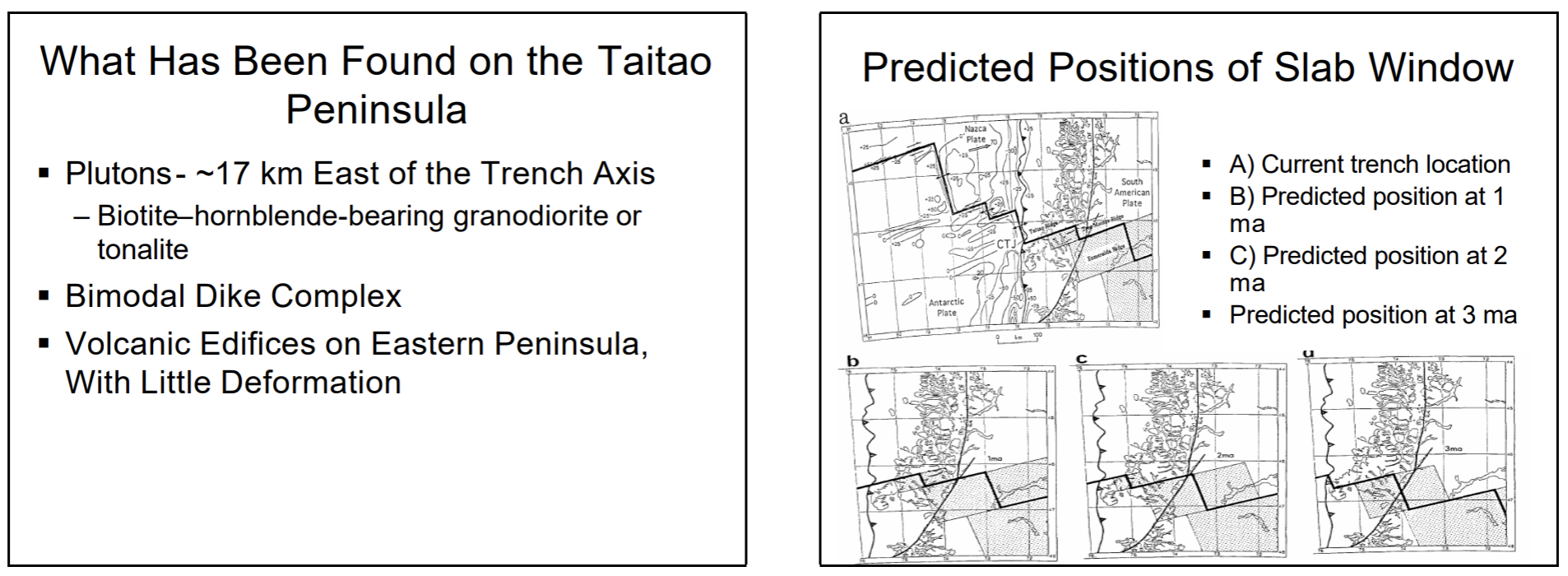
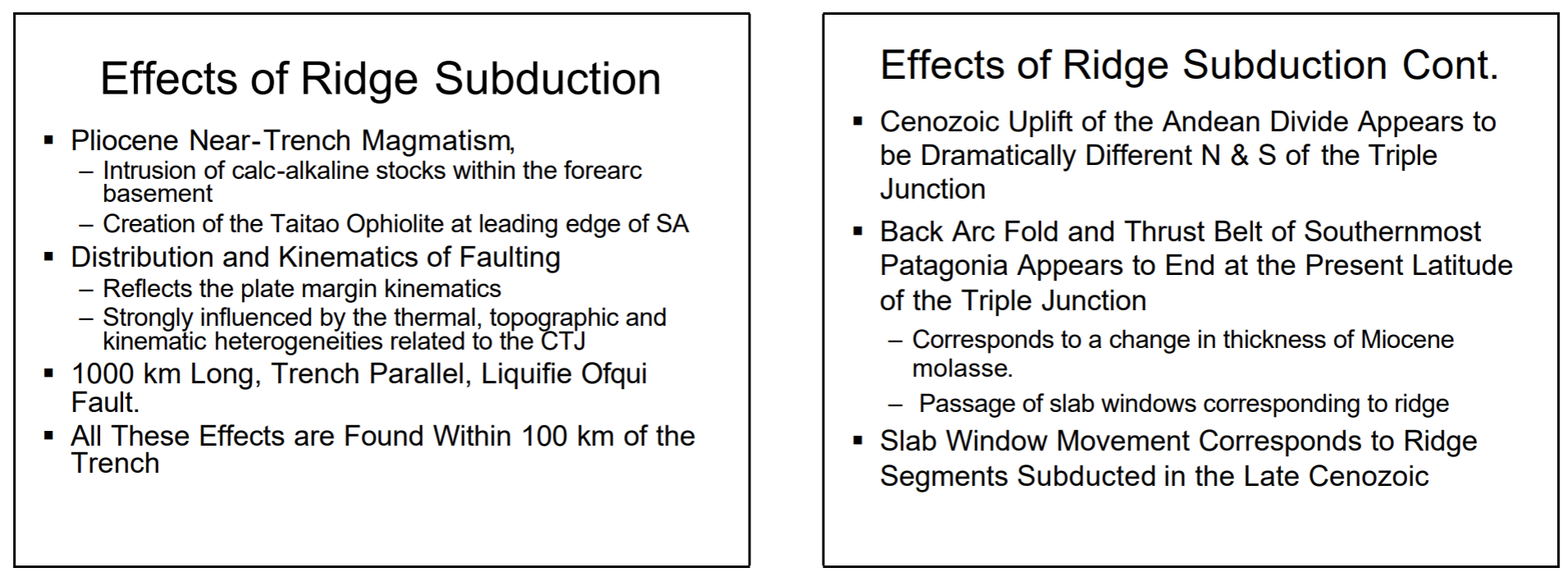
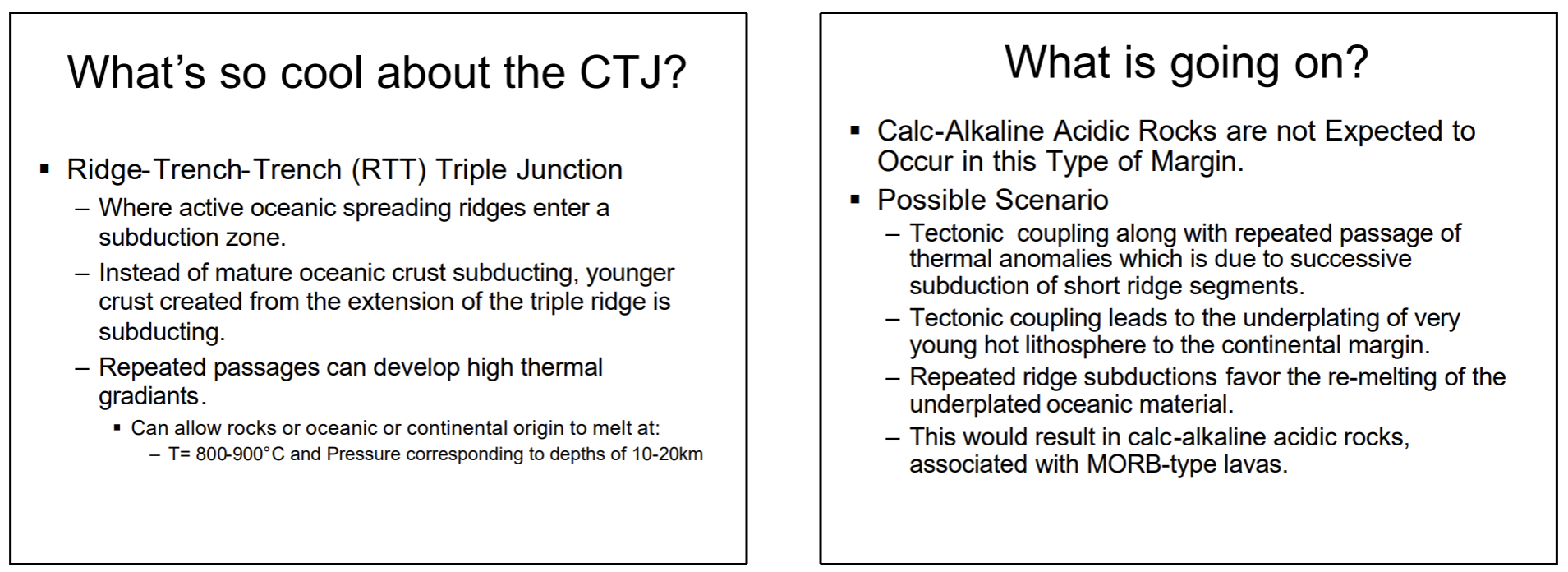
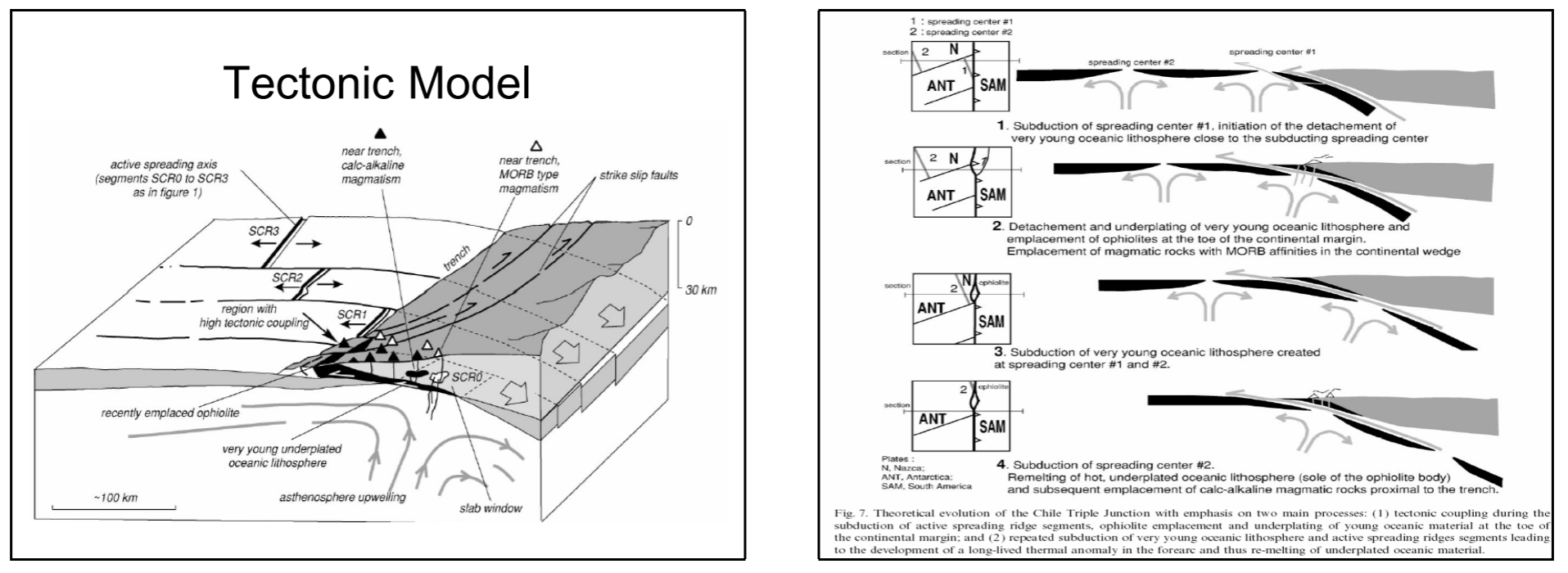

Why is it possible for this portion of the Chile Rise to subduct? The main reason is that the plates on either side of the ridge, the Antarctic Plate and The Nazca Plate, are sufficiently strong to carry this ridge segment along as they move into the trench. What happens to the rock in the ridge as it migrates into the subduction zone? To the extent that the Antarctic and Nazca Plates continue to diverge from each other, which their strength away from the ridge would cause them to tend to do, there will be flow of warm rock from below to fill the resulting gap. But this flow is relative to the movement of the gap into the trench and beneath the South American Plate. So whether the net motion is actually upward or downward depends on which of the two vertical components of motion is greater. This conclusion is the same for both UPT and CPT.